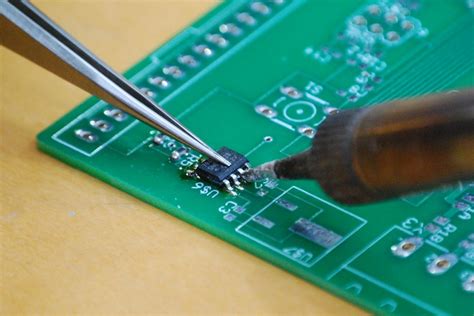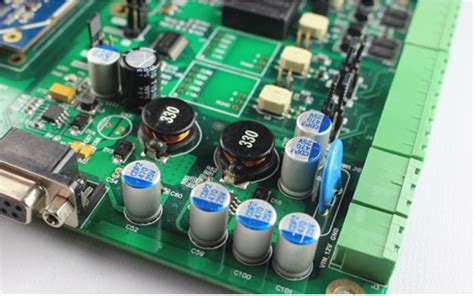Flexible PCB Quote Essentials: Transparent Pricing Breakdown
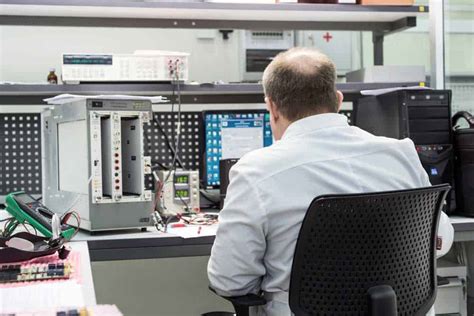
Key Takeaways
When requesting flexible PCB quotes, understanding cost drivers helps you navigate pricing structures effectively. PCB manufacturing costs typically break down into four primary categories: base materials, design intricacy, panelization efficiency, and production timelines. Reputable PCB manufacturing companies often provide itemized quotes, but you’ll need to ask for granular details to avoid surprises.
"Always request a cost breakdown that separates material expenses from labor and tooling fees—this transparency is critical for accurate budgeting."
Here’s a quick comparison of common pricing models in the PCB manufacturing business:
| Pricing Factor | Cost Impact Range | Key Considerations |
|---|---|---|
| Material Grade (e.g., PI vs. PET) | 15-40% | High-frequency applications demand premium substrates |
| Layer Count | 20-35% | Each additional layer increases lamination complexity |
| Panel Utilization Rate | 10-25% | Optimal nesting reduces waste per panel |
| Rush Turnaround | 30-50%+ | Expedited orders disrupt production schedules |
To minimize PCB manufacturing costs, prioritize designs that balance performance with manufacturability. For instance, rounded corners reduce stress points in flexible circuits, while standardized hole sizes lower drilling expenses. When evaluating quotes, verify whether testing protocols are included—some providers charge extra for impedance testing or bend-cycle validation.
Remember: Design complexity directly affects tooling time. A 6-layer rigid-flex design might cost 2.3x more than a 2-layer equivalent due to alignment precision requirements. Always clarify if your vendor uses dynamic pricing based on raw material market fluctuations—this prevents budget overruns during volatile periods.

Flexible PCB Material Cost Analysis
When budgeting for flexible PCB manufacturing, material selection constitutes 25-40% of total PCB manufacturing costs. The base polyimide film — prized for thermal stability — typically costs 30% more than rigid FR-4 alternatives. Copper foil thickness (0.5 oz to 2 oz) further influences pricing: thicker layers enhance conductivity but increase raw material expenses by up to 18%. Specialty adhesives for multilayer bonding add 12-15% to material budgets compared to standard single-layer builds.
Reputable PCB manufacturing companies often provide material-grade options (e.g., DuPont Pyralux vs. economical alternatives), with price variances reaching 22% for high-frequency applications. Laminates with low-loss dielectric layers can escalate costs by 20-35% but are non-negotiable for 5G or aerospace projects. Always verify if suppliers include protective coverlays/overlays in base quotes — omitting these might reduce upfront PCB manufacturing business quotes but risk reliability issues.
For cost-sensitive projects, discuss thinner polyimide substrates (25μm instead of 50μm) or hybrid rigid-flex configurations with your fabricator. Transparent vendors will clarify how material choices impact both performance and PCB manufacturing cost, enabling informed trade-offs between durability and budget constraints.
Design Complexity Pricing Factors Explained
When requesting a flexible PCB quote, understanding how design complexity influences PCB manufacturing cost is crucial. Advanced features like multi-layer stacking, high-density interconnects (HDI), or specialized bend requirements often require PCB manufacturing companies to adjust their production workflows, directly impacting pricing. For instance, designs demanding 8+ conductive layers or microvia drilling typically incur 15-30% higher costs than standard single-layer boards due to increased material usage and precision machining.
Your choice of trace width/spacing also plays a role—designs below 3/3 mil thresholds may necessitate laser direct imaging (LDI) systems, which PCB manufacturing businesses often price separately. Additionally, impedance control requirements or RF shielding layers add validation steps, extending production timelines and labor costs. To avoid surprises, clarify whether your PCB manufacturing partner uses automated design rule checks (DRC) or manual inspections, as the latter can introduce variability in final quotes.
Transitioning to panelization strategies? Keep in mind that intricate designs influence how efficiently PCB manufacturing teams nest your boards within production panels—a factor we’ll explore next.
Panelization Strategies for Budget Optimization
When requesting flexible PCB quotes, understanding panelization efficiency directly impacts your PCB manufacturing cost. Most PCB manufacturing companies optimize pricing by grouping multiple circuits on a single production panel, but the strategy you choose can make or break your budget. Start by evaluating array configurations—arranging designs to maximize panel space utilization reduces material waste. For instance, nesting irregularly shaped boards or using step-and-repeat patterns can lower per-unit expenses.
Collaborate with your PCB manufacturing business partner to determine the optimal panel size. Standard panels (like 18"x24") often cost less than custom dimensions, but tighter layouts may require advanced tooling. Be mindful of scoring vs. routing: V-cut scoring is cheaper for simple separations, while routing suits complex shapes but adds labor costs.
Additionally, consider lead time trade-offs. Aggressive panelization might shorten fabrication time for bulk orders, but rushed timelines could negate savings. Always verify if your supplier includes depanelization services in the quote or charges extra—this hidden cost often surprises buyers. By aligning panel design with production capabilities, you maintain control over both PCB manufacturing timelines and budgets.
Lead Time Impact on Flexible PCB Quotes
When requesting a flexible PCB quote, understanding how lead time affects pricing is critical for balancing speed and cost. PCB manufacturing companies often structure costs around production timelines, with shorter deadlines typically incurring higher PCB manufacturing cost due to expedited material sourcing, priority scheduling, or overtime labor. For example, a 5-day turnaround might cost 20-30% more than a standard 15-day cycle.
Your project’s urgency directly influences panelization efficiency and material availability. If components require specialized substrates or adhesives, rushed orders may limit bulk purchasing discounts, further elevating expenses. Conversely, aligning with PCB manufacturing business cycles—such as avoiding peak seasons—can secure better rates. Always clarify whether suppliers charge flat fees for acceleration or scale costs dynamically based on complexity.
Additionally, prototyping phases benefit from extended lead times, allowing iterative testing without premium charges. For volume production, however, tight deadlines might still be necessary—just ensure transparency about how PCB manufacturing timelines interact with your budget. By weighing these variables early, you avoid last-minute surprises and maintain control over both schedule and spending.
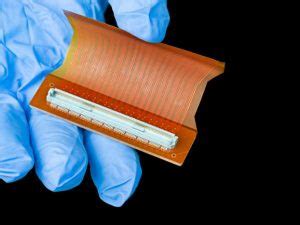
Transparent Pricing Models Comparison Guide
When evaluating PCB manufacturing quotes, understanding how providers structure their pricing models helps you identify true cost drivers. Most PCB manufacturing companies offer three primary frameworks: fixed-rate (per square inch), tiered pricing (volume-based discounts), and dynamic models (customized to design parameters). Fixed-rate models work best for standardized designs with predictable PCB manufacturing cost, while tiered pricing suits bulk orders where panelization efficiencies reduce per-unit expenses.
However, dynamic models—common among specialized PCB manufacturing business partners—factor in variables like impedance control requirements or flex-rigid hybrid designs, which significantly impact final quotes. To ensure transparency, compare how each provider itemizes material grades (e.g., polyimide vs. PET films), layer counts, and testing protocols. For example, some firms bundle electrical testing into base costs, while others list it separately.
Look for suppliers that provide interactive quoting tools or breakdowns aligning with your project’s complexity. This approach not only clarifies where your budget goes but also highlights opportunities to optimize panel layouts or material choices without compromising quality. Always cross-reference quoted lead times against pricing tiers—accelerated production often incurs premiums that disrupt cost predictability.
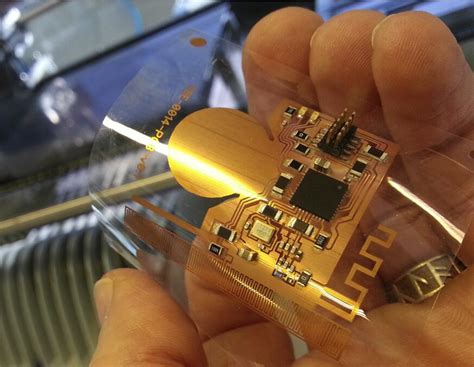
Key Components in Flexible PCB Budgeting
When planning your PCB manufacturing budget, understanding four primary cost drivers ensures accurate financial forecasting. Material selection typically accounts for 25-35% of total expenses, with flexible PCB manufacturing companies offering varied pricing for polyimide films, adhesive systems, and copper foil grades. Higher temperature resistance or chemical stability requirements often escalate PCB manufacturing costs by 15-20% compared to standard FR-4 alternatives.
Design complexity directly influences fabrication time, particularly when dealing with micro-vias (≤100μm) or controlled impedance traces. Each additional layer increases PCB manufacturing business expenses by 8-12%, while impedance-controlled designs may require specialized testing equipment. Panelization efficiency—how many circuits fit per production panel—can reduce unit costs by 18-25% through optimized material utilization.
Lead time flexibility remains critical: expedited orders (5-7 days) typically incur 30-40% surcharges versus standard 14-day cycles. However, partnering with PCB manufacturing providers offering tiered pricing models allows balancing urgency and budget. Always verify whether quotes include secondary processes like stiffener attachment or laser cutting, as these services often appear as hidden line items in initial estimates.
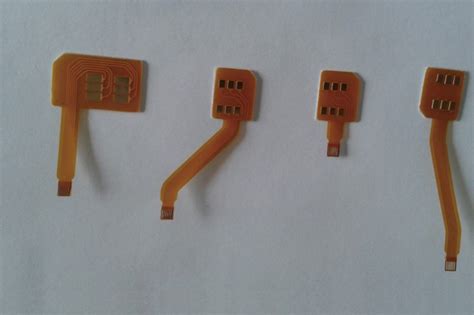
Avoiding Hidden Costs in PCB Quotations
When requesting quotes from PCB manufacturing partners, hidden expenses often lurk beneath surface-level estimates. Non-standard requirements like specialized tooling or custom testing protocols frequently trigger unanticipated charges that aren’t always itemized in initial proposals. To avoid surprises, explicitly ask suppliers about PCB manufacturing cost components including NRE (Non-Recurring Engineering) fees, UL certification markups, and minimum order quantity penalties.
Reputable PCB manufacturing companies typically disclose their cost structures through detailed line-item breakdowns. Scrutinize whether quoted prices account for post-production processes like electrical testing or impedance control verification – these often-overlooked services can inflate final invoices by 12–18%. For complex designs, consider requesting prototype batches before full production runs to identify potential rework triggers early.
Your RFQ (Request for Quotation) should mandate complete transparency regarding material certifications and testing methodologies. Many PCB manufacturing business models incorporate flexibility charges for design modifications during production – clarify revision policies and associated fees upfront. By cross-verifying these elements across multiple bids, you create competitive pressure that encourages vendors to optimize their pricing models.

Flexible PCB Fabrication Variables Breakdown
When requesting a flexible PCB quote, understanding fabrication variables ensures you avoid unexpected PCB manufacturing cost spikes. Three primary factors dominate: material selection, production scale, and technical specifications. Polyimide substrates or specialty conductive inks, for instance, can increase base expenses by 15–40% compared to standard FR-4 alternatives. PCB manufacturing companies often adjust pricing based on order volume—prototypes may cost 3–5x more per unit than bulk orders due to setup fees.
Layer count and trace density also play pivotal roles. A 6-layer flexible PCB with 3-mil trace widths typically incurs 20–30% higher PCB manufacturing fees than a 2-layer equivalent. Tight tolerances (<±5%) or impedance-controlled designs further amplify complexity, requiring advanced equipment and skilled labor. Thermal management requirements—like adding stiffeners or heat-resistant adhesives—add another layer to cost calculations.
Lead time compression is another critical variable. Expedited orders (5–7 days) often carry 25–50% surcharges compared to standard 2–3 week timelines, as PCB manufacturing business operations prioritize rush jobs. Always clarify whether panelization (grouping multiple designs on one panel) is included in quotes, as this strategy optimizes material usage and reduces per-unit costs. By analyzing these variables upfront, you gain transparency into how PCB manufacturing partners structure their pricing models.
Conclusion
When evaluating PCB manufacturing quotes, understanding the interplay between material selection, design specifications, and production timelines becomes critical for accurate budgeting. Reputable PCB manufacturing companies often structure pricing around four pillars: material grades, layer counts, panel utilization rates, and turnaround speed. By analyzing these variables early, you can identify cost-saving opportunities without compromising quality—for instance, opting for standardized materials or adjusting panelization layouts to minimize waste.
Transparency remains key in avoiding unexpected expenses. Always request detailed breakdowns that separate PCB manufacturing cost components like prototyping fees, testing charges, and bulk-order discounts. This clarity helps you compare vendors objectively and spot inconsistencies in quotations. Remember that faster lead times typically incur premium charges, but strategic planning with your manufacturer can balance urgency and affordability.
Finally, building a partnership with trusted PCB manufacturing business partners ensures alignment between your project requirements and their capabilities. Ask about their quality control protocols and scalability options—these factors often influence long-term cost efficiency. By mastering these essentials, you transform quote analysis from a reactive task into a proactive budgeting strategy.
FAQs
What factors most influence flexible PCB manufacturing costs?
Your project’s PCB manufacturing expenses depend on three primary elements: material selection (polyimide vs. polyester), design complexity (layer count, bend radius), and production volume. Reputable PCB manufacturing companies often provide tiered pricing based on order quantity.
How do panelization strategies affect PCB manufacturing business quotes?
Optimizing panel layouts reduces material waste, directly lowering PCB manufacturing cost. Manufacturers may charge extra for complex panel designs requiring specialized tooling. Always confirm if your provider includes panelization in their base quote or treats it as an add-on service.
Why do lead times impact pricing in PCB manufacturing?
Expedited orders often incur 15-30% surcharges due to prioritized scheduling and overtime labor. Standard lead times (2-4 weeks) balance PCB manufacturing efficiency with cost-effectiveness. For budget-sensitive projects, avoid last-minute design changes that trigger re-quoting.
How can hidden costs emerge in flexible PCB quotes?
Unaccounted expenses often stem from testing certifications (IPC-6013), custom packaging, or import duties. Reputable PCB manufacturing companies disclose these upfront—request a line-item breakdown to compare total costs across vendors accurately.
What defines transparent pricing models in PCB manufacturing businesses?
Leading providers itemize expenses like raw materials, labor, and overhead separately. Look for suppliers offering real-time quoting tools that adjust prices when you modify design parameters—this prevents surprises during final invoicing.
Need a Custom Quote for Your Flexible PCB Project?
For tailored pricing that aligns with your technical requirements and budget, click here to connect with Andwin PCB’s manufacturing experts. Their team specializes in cost-optimized solutions for prototypes and high-volume orders.


